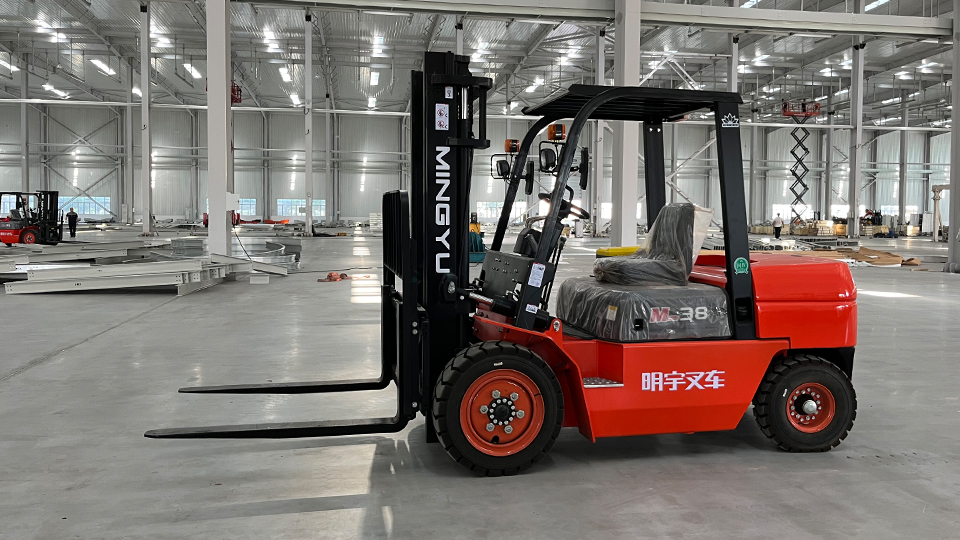
The Critical Timeline: How Long Does It Really Take to Get Forklift Certified Online?
Getting forklift certified online is a question of hours, not weeks, but that clock only measures the first of a critical two-part process. The straightforward answer is that the online theoretical instruction can be completed in as little as 1 to 4 hours, but the full, legally compliant certification process requires an in-person, employer-led performance evaluation that adds an irreducible amount of time.
This technical article will dissect the OSHA (Occupational Safety and Health Administration) requirements for powered industrial truck (PIT) operators (29 CFR 1910.178) and provide a realistic breakdown of the required time investment.
The Bifurcated Path: Online Theory vs. On-Site Practice
The key misconception about "online certification" is that the digital certificate itself grants permission to operate. Under OSHA regulations, a true, legally compliant certification has two distinct and mandatory phases:1
Phase 1: Formal Instruction (The Online Portion)

The online course covers the foundational, theoretical knowledge required for safe operation.2 This phase is an employer's best tool for time-efficient compliance, offering flexibility and self-pacing.
|
Component |
Estimated Time |
Key Details & Requirements |
|
Course Content |
1 to 3 Hours |
Lectures, video modules, written materials, interactive learning. Must cover general operating principles, warnings, precautions, load handling, etc. |
|
Knowledge Exam |
30 Minutes to 1 Hour |
A written or verbal test (usually multiple-choice) to ensure comprehension of the theoretical material. Most courses allow unlimited retakes. |
|
Total Online Time |
1.5 to 4 Hours |
This is the minimum time needed to complete the coursework. A quick study with prior knowledge might finish on the lower end, while a new operator taking their time will be closer to the higher end. |
The Verdict on Phase 1: A focused, experienced trainee can sprint through the formal instruction in under two hours. However, the time is often extended by a necessary, mandatory slow-down designed to ensure the content is absorbed, not just clicked through. Upon passing the final exam, you immediately receive a printable Certificate of Training, but this is not your final license.
Phase 2: Practical Training and Performance Evaluation (The On-Site Portion)
This phase is the non-negotiable handshake with reality. OSHA mandates that the operator must be observed and evaluated on the specific type of forklift (Class I-VII) they will be operating, and within the actual workplace environment . This cannot be done virtually.
|
Component |
Estimated Time |
Key Details & Requirements |
|
Supervised Practice |
1 to 2 Hours |
Varies wildly based on operator experience. A certified trainer must provide a demonstration and supervise the trainee performing practical exercises (lifting, turning, stacking, navigating obstacles). A complete novice will require more practice time. |
|
Performance Evaluation |
15 Minutes to 1 Hour |
The final test. A qualified individual (appointed by the employer) must observe and evaluate the operator's performance against a standardized checklist. This assesses real-world competence in pre-shift inspection, load handling, maneuvering, and parking. |
|
Final Certification |
Immediate |
Once the evaluator signs the Performance Evaluation Form, the employer officially issues the final, valid, and legally-compliant certification record. |
The Verdict on Phase 2: The hands-on portion is the most flexible—and the most critical. While the final evaluation might take less than 20 minutes for a seasoned operator, a complete beginner will need time to practice safely before they are even ready for the final test. This time is almost entirely dependent on operator aptitude and trainer availability.
⏱️ The Total Time Investment: A Realistic Scenario Breakdown
When an operator asks, "How long does it take?" they are often seeking the elapsed time from sitting down to having a valid card in hand. Here is a realistic timeline:
|
Scenario |
Total Elapsed Time |
Target Trainee |
Notes |
|
The "Need-It-Today" Sprint |
~4 to 6 Hours |
Experienced Operator/Refresher |
Online theory completed quickly (2 hrs), followed immediately by a brief refresher practice and a rapid, successful evaluation (2 hrs). |
|
The New Operator Standard |
~6 to 10 Hours |
Complete Novice |
Theoretical training (4 hrs), followed by a dedicated practical training session with necessary practice time (2-5 hrs), and a final evaluation. This may be split over two work shifts. |
|
The Logistical Delay |
1 to 3 Days |
Any Trainee |
The time often dictated by the employer's schedule. The online course is finished in one afternoon, but the on-site trainer/evaluator isn't available until the next day. This is the most common real-world delay. |
Why the Online Component is an Efficiency Engine, Not a Shortcut
The online course is the true efficiency gain. By offloading the "classroom" portion—which traditionally took 4-6 hours of in-person time—to a flexible, self-paced digital environment, employers drastically reduce scheduling friction.
Self-Paced Learning: Operators can complete modules during downtime or on their own schedule.3
Reduced Disruption: Training an entire crew no longer requires shutting down operations for a full day of classroom instruction.

Consistency: The online platform ensures every operator receives the exact same, up-to-date theoretical instruction, which simplifies compliance documentation.
In summary: The digital age has allowed the formal instruction to be compressed into 1 to 4 hours. However, the full, compliant certification is a hybrid process, typically requiring an entire work day (6-10 hours) of focused effort, or spread across 1 to 3 days depending on on-site scheduling. The "online" card is proof of knowledge; the final, signed card is proof of competence.
Name: selena
Mobile:+86-13176910558
Tel:+86-0535-2090977
Whatsapp:8613181602336
Email:vip@mingyuforklift.com
Add:Xiaqiu Town, Laizhou, Yantai City, Shandong Province, China